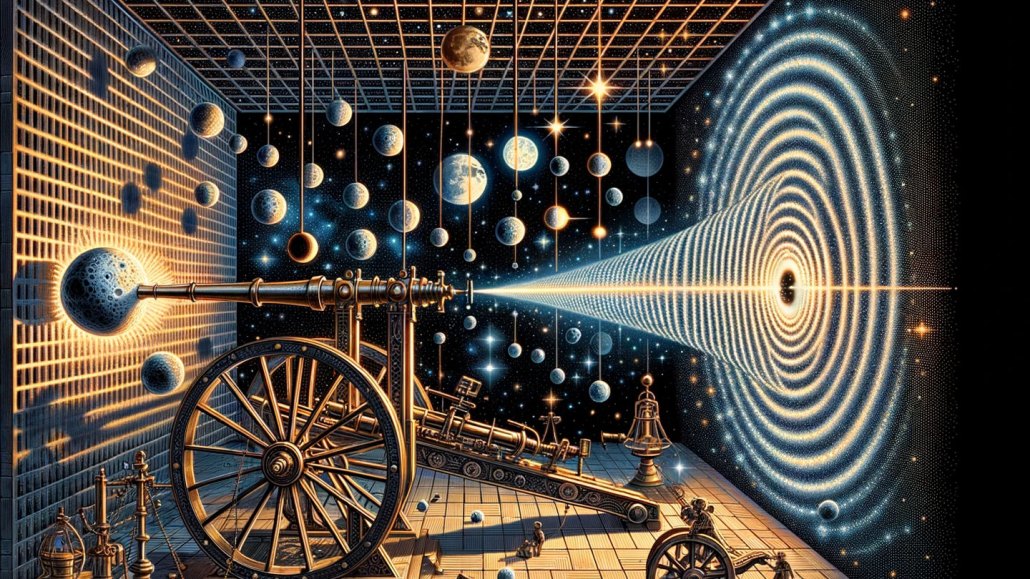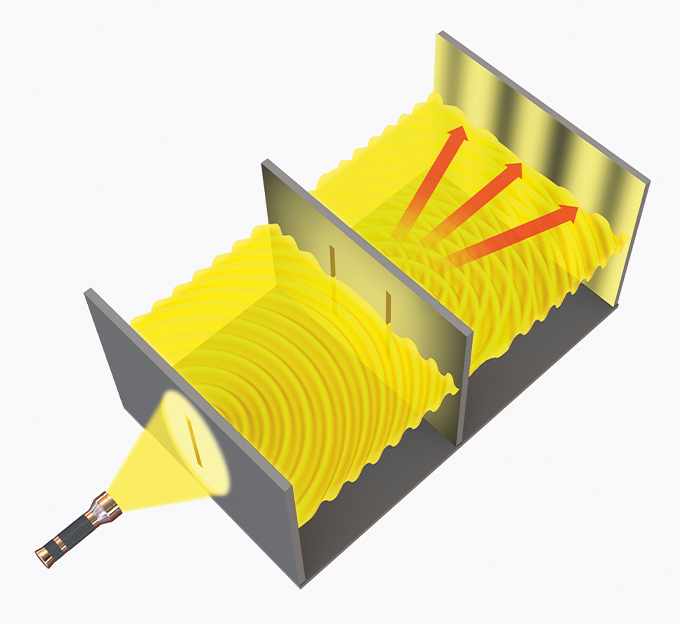A maverick physicist is building a case for scrapping quantum gravity
Gravity might be classical, not quantum, physicist Jonathan Oppenheim suggests

Scientists are developing a theory of gravity that describes spacetime in a classical, or non-quantum, way, yet preserves known quantum effects, such as interference patterns (represented by the striped circle at right) observed in certain experiments.
Isaac Young
- More than 2 years ago
A rift runs deep through the heart of physics. The general theory of relativity, which describes gravity, clashes with quantum physics. In an effort to seal that physics fissure, untold numbers of physicists have spent their careers working to build a theory of quantum gravity.
But one physicist is championing a radically different path. Jonathan Oppenheim thinks that gravity might be fundamentally classical, meaning it isn’t quantum at all. It’s an unconventional idea, to say the least.
“When we started, maybe 99 percent of our colleagues thought we were crackpots and that’s now down to maybe 70 percent,” quips Oppenheim, of University College London.
All known forces except gravity are formulated in terms of quantum physics. The prevailing view is that gravity will need to assimilate with its quantum colleagues. But gravity is different, Oppenheim argues. While other forces evolve within a landscape of spacetime, gravity is the warping of spacetime itself. So, Oppenheim says, “it is pretty unclear that it should have a quantum nature, in my view.”
Physicists have devised several “no-go” theorems that seemingly forbid a classical theory of gravity. Such theorems highlight inconsistencies, apparently fatal to the idea, that arise when classical gravity is applied to quantum particles. But it’s possible to get around those prohibitions by adding some randomness to the way that spacetime bends in response to quantum particles, Oppenheim reports December 4 in Physical Review X.
Consider the famous double-slit experiment of quantum physics (SN: 5/3/19). Particles are sent toward a detector, separated by a barrier with two slits in it. When those particles arrive at the detector, they create a stripy pattern called an interference pattern. That pattern arises because, in quantum physics, the particle isn’t constrained to pass through one slit or the other. Instead, it can exist in a superposition, taking a quantum combination of both possible routes. If a scientist makes a measurement to determine which slit the particle passed through, that pattern disappears.

If a standard classical picture of gravity were correct, it would be possible to measure the gravitational field of that particle so precisely that you could determine which slit the particle went through. This possibility would destroy the interference pattern, even without actually doing the measurement. Because scientists do observe interference patterns in the lab, that’s a big blow for a standard classical theory of gravity.
But the randomness baked into Oppenheim’s theory means that, instead of a particle having a determined gravitational field, the field fluctuates. That means, unlike for the standard version of classical gravity, it’s not possible to determine which slit a particle went through by precisely measuring its gravitational field. Particles can pass through the slits in a superposition, and the interference pattern is saved, restoring the possibility gravity could be classical.
Experiments can test this theory by searching for evidence of those random gravitational fluctuations, Oppenheim and colleagues report December 4 in Nature Communications. “Essentially, you very precisely measure the response of a mass to a gravitational field,” says study coauthor Zach Weller-Davies, who completed the work at the Perimeter Institute for Theoretical Physics in Waterloo, Canada.
This is not the first time scientists have proposed a way to make classical gravity comport with quantum physics. But Oppenheim has been “leading a renaissance,” says physicist Vivishek Sudhir of MIT. Sudhir hopes to test the theory with another type of experiment, measuring the correlations between the motions of two masses that interact gravitationally, he and a colleague report September 16 at arXiv.org.
However, the theory has features some physicists might find unsatisfying. For example, the randomness involved means that the theory is not reversible: Unlike other theories, there’s no way to start from the endpoint of an interaction and trace its steps backward.
Still, even some quantum gravity believers think that the work has merit.
“The reason why this work is interesting for me is not really because I would believe that gravity is classical,” says Flaminia Giacomini of ETH Zurich. The result, she says, is interesting regardless of whether gravity is found to be classical or quantum. That’s because, in order for an experiment to confidently proclaim that gravity is quantum, scientists need to understand the possibilities for classical gravity. “Only in that way will we be able to prove in a strong way that gravity is not compatible with a classical description.”







